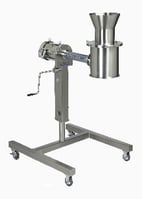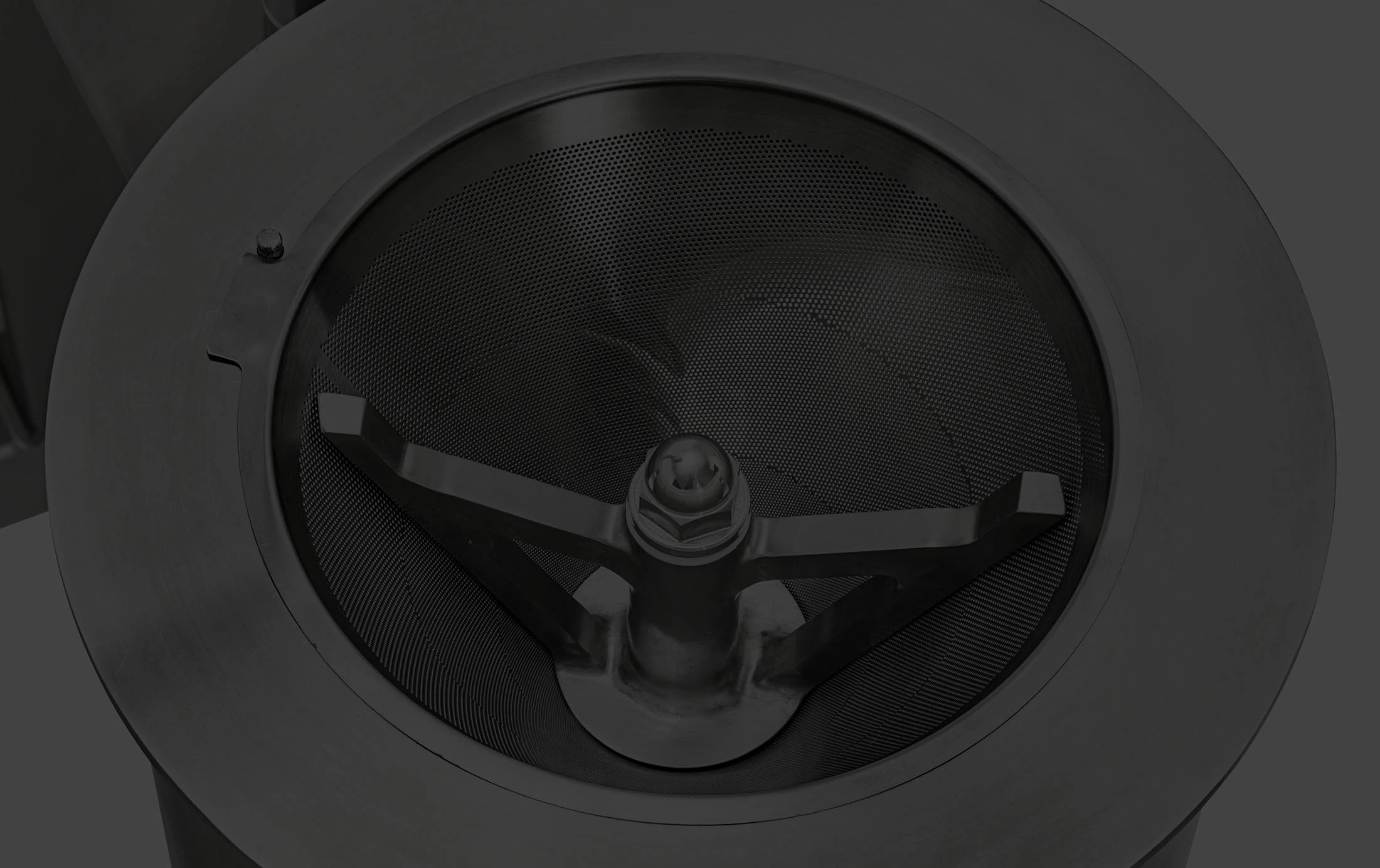A large international pharmaceutical manufacturer approached Quadro with an application to reduce the size of a small percentage of oversized particles contained within a dry granulation formulation.
The Customer Challenge
A 100 to 200 U.S. standard mesh lactose powder was being mixed with an active medicinal ingredient in a V-cone blender. The blending action produced approximately 4% (+) 20 mesh lumps whilst leaving the rest of the product properly sized.
Due to problems previously encountered in trying to sift such a fine powder at a high rate, the customer wanted to reduce these oversized particles directly from the blender without changing the particle size distribution of the remainder of the material. The desired capacity was 1,500 pounds per hour (682 kg/hr). However, this was proving difficult to do due to the attrition generated by the sifting equipment.
The Quadro Solution

The gentle grinding action of the Quadro® Comil® and its quick discharge of already properly sized particles was tested by the customer. It meant their parameters of a 100% (-) 20 U.S. standard mesh powder (80 micron) without a significant change in the particle size distribution of the original infeed material. Capacity was also increased to 3,900 lb/hr (1,750 kg/hr).
The Results
The Comil® U20 was supplied with such options as an adjustable height frame, explosion-proof electrics and a special in-feed chute. The Comil® has now become an integral step between the customer’s blending and tableting operations.
By installing the Comil in-line, the customer was able to size reduce over-sized particles directly from the blender without changing the particle size distribution of the remainder of the material and more than double the original capacity.
Learn more about Quadro's Pharma Milling Equipment here.
(Ref: AP5R1 Dry Granulation prior to tableting)

